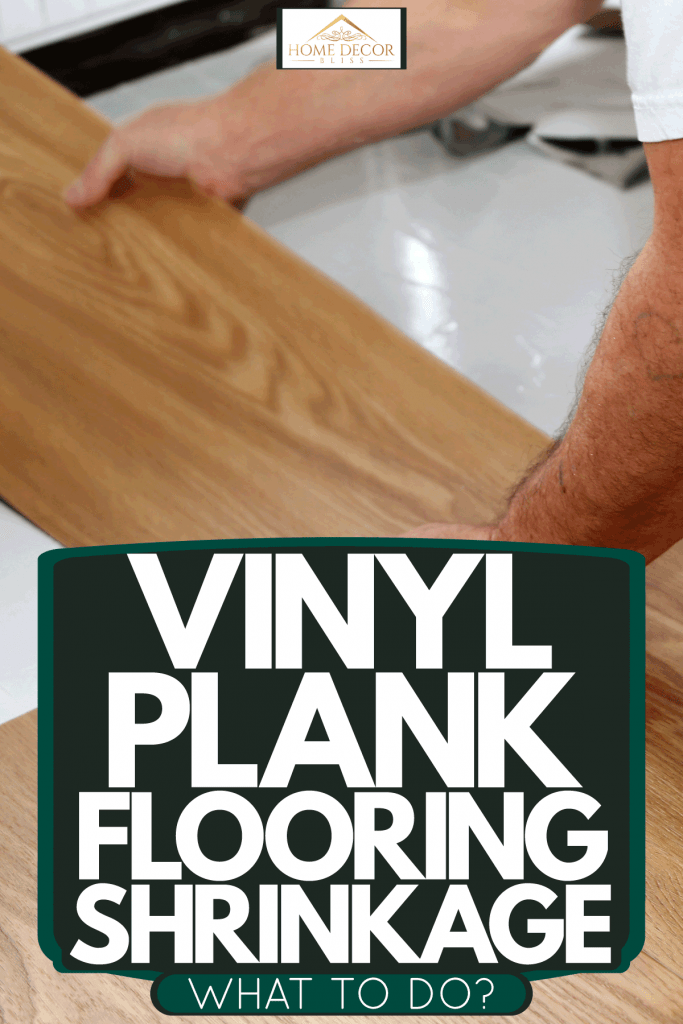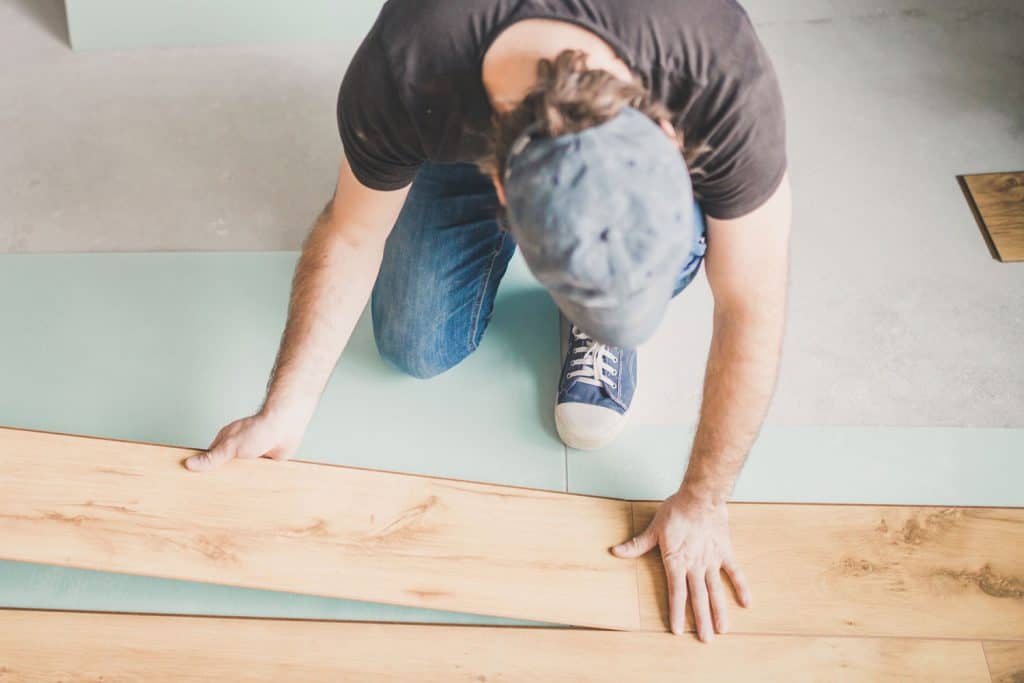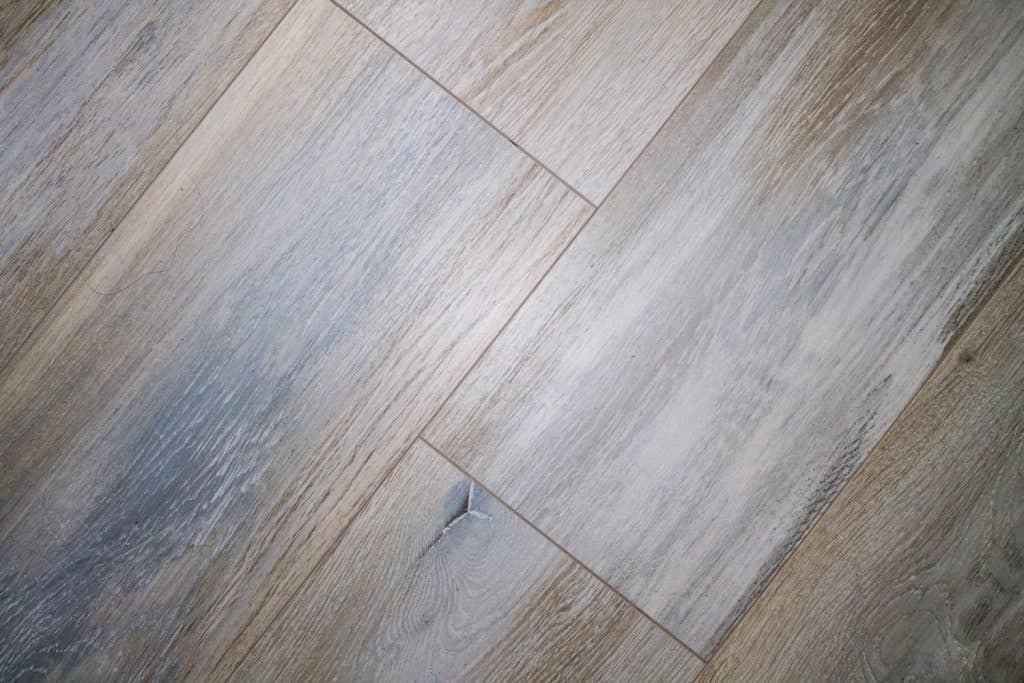Vinyl plank flooring is highly resilient and one of the best flooring options you can choose if you're looking for durability. However, it is known to shrink under certain conditions and after a certain period of time. What causes this? And better yet, what are you to do if it does shrink? We've researched the answers to these questions, and in this post, we will go over them with you.
Vinyl plank flooring can shrink due to environmental factors, age, and improper installation. The most common option for repairing the floor is using a mallet to close the gaps between the planks or fill in the gaps using caulk. And, of course, you can always replace the entire flooring.
More often than not, it's easier to repair the flooring than to replace it--not to mention it's less expensive. However, replacing it may be the better option if the flooring is old or has significant damage. Continue reading to learn more about each option, how to prevent shrinkage, and other things to consider.

Why is my vinyl plank flooring separating?
There are quite a few reasons why your vinyl plank flooring may start separating. However, here are the most common ones.
We sometimes add affiliate links and content that was curated and created by our team with the help of advanced ai tools to help showcase the best design styles.

Temperature Fluctuations
When the vinyl plank flooring experiences significant changes and environmental factors, it's known to shrink and expand--shrinking in colder conditions and expanding in hotter conditions. Factors such as constant sunlight exposure over long periods can also cause the vinyl to heat up and shrink, creating small gaps between the planks.
Breakdown of Esters
Esters, also known as plasticizers, are liquid solvents added to a synthetic resin to promote flexibility and elasticity in the planks. This gives the planks their durability and allows them to shrink and expand with changes. However, this can have a reverse effect when there are drastic changes in the planks' environment.
Over time, the esters in the vinyl planking can begin to break down, especially when the planking is exposed to sunlight. When this happens, you'll notice gaps between the planks, or the edges may start to cup.
Foundational Settling
Anytime you have vinyl plank flooring installed in a newly built home, you'll likely see some separation of the planks over a period of time. New homes typically need to settle, which will cause the foundation to move slightly over the first few years. When this happens, the home's interior floors will also move slightly, and if you have plank flooring, it may shift.
You may also notice an increase in gaps during times of precipitation, such as heavy snow or rain or the coldest month of the year in general. Ultimately, there is not much that you can do to prevent this shifting. However, it helps to be aware of these whenever you're installing new flooring in a home.
Adhesive Failure
Vinyl plank flooring can be installed in a couple of different ways, depending on the flooring type. You can install what's known as "click-in" flooring fairly quickly by simply laying the flooring down and aligning the planks alongside one another until their ends click and place. And then there are the vinyl planks that you can install using a flooring adhesive.
If the home is exposed to excessive moisture or the vinyl planks become ten-plus years old, the adhesive can break down beneath the planks. And as a result, you guessed it; the flooring will begin to separate and display gaps.
Subpar Installation
Another cause for a separation of vinyl plank flooring is a bad installation job. For example, if the installer did not allow for the appropriate perimeter between the edges of the flooring and the wall, the flooring may separate over time.
This can be fixed by reinstalling the floors, applying caulk to the gaps, or using a mallet. However, the best repair method will depend on the extent of the separation and the type of planks that you have.
Floor Damage
Floor damage from furniture moves, dropping heavy objects, and water damage can also create gaps within vinyl plank flooring. If you plan to move heavy furniture across the floor, it's always best to carry it or place furniture sliders on the bottom before running it across the planks.
The sliders will reduce the friction on the planks, making it less likely that they'll move during the process. If your floors experience water damage due to busted pipes or a broken water heater, it's always best to mop up as much water as possible so that it doesn't settle on the floor, which can eventually cause cupping and separation.
Does vinyl shrink over time?
Vinyl flooring can shrink over time under certain conditions. These conditions usually include considerable fluctuation in temperature and humidity or exposure to long periods of direct sunlight. That being said, let's look at a few tips for preventing shrinkage.

Allow the planks to adjust before installation
Many builders recommend letting the flooring sit in the room in which it would be installed for a period of 48 hours to 1 week. It is believed that the planks will be able to adjust to the temperature and humidity of the room during this time.
Ensure the floor is level
Before installing the planks, make sure that the floor is properly prepared. This means cleaning the floor and ensuring that it is level. You can buy a leveler on Amazon for about $20, and it's worth the extra trip if you don't have it already. This will ensure that there won't be any gaps forming from the planks moving over time.
Read details about this level on Amazon.
Apply Quality Adhesive & Material
If you are making the installation a DIY project, always use quality adhesive and quality vinyl planks. Low-quality planks are more likely to cup, spread, and shrink over time, and low-quality adhesive is quicker to break down faster than more expensive adhesive products.
Use Proper Spacing

The common rule of thumb is to have at least a quarter-inch space between floor tiles and walls. However, some planks may require a larger space. Often the recommended wall spacing will be included in the instructions for installing the planks.
How do you fill gaps in vinyl plank flooring?
You can fill gaps in vinyl plank flooring using one of two methods. You can use a mallet to go plank by plank and hammer them so that they'll slide back together. Or, you can apply caulk to the gaps between each plank. The method you use will depend on the number of plants with gaps, your personal preference, and the type of vinyl planks you have.
If the vinyl planks are "click-in," using a mallet to close the gaps will be straightforward. However, if the planks have been installed using an adhesive, you'll need to use caulk to close the gaps. Before applying either method, be sure to clean the floors and remove any dirt or debris from the surface.
Check out this mallet on Amazon.
Should I caulk around vinyl plank flooring?

Yes. You can caulk around vinyl plank flooring if you're looking to close gaps between the planks or between the planks and the wall. Over time the planks can develop gaps due to temperature and humidity changes, improper installation, or other factors.
The caulk can provide a quick and easy way to seal the area without paying hundreds of dollars for a contractor to do it or save you the effort of applying a sealant to the entire floor. It is best to keep a damp rag or sponge handy to avoid having the caulk dry on top of the planks. That can be difficult to remove without damaging or scratching the plank.
Can you seal a vinyl plank floor?
Vinyl floors typically come in a range of sheens, many of which make sealant pretty pointless. However, if you want to make your floors completely waterproof, you can apply a sealant to provide an extra layer of protection over the planks and the seams between them.
If you decide to apply a sealant to the floor, it's best to find one recommended by the manufacturer (and if it's recommended at all) to avoid damaging the planks.
Check out this Trewax Professional Sealant on Amazon.
Wrapping Things Up
Even though vinyl plank flooring is one of the most durable and affordable options out there, it can be prone to shrinkage. This is due to certain factors such as age or improper installation. It's always best to take the proper precautions when installing this type of flooring to ensure that it will last for many years to come.
Before you go, be sure to check out some of our other posts:



